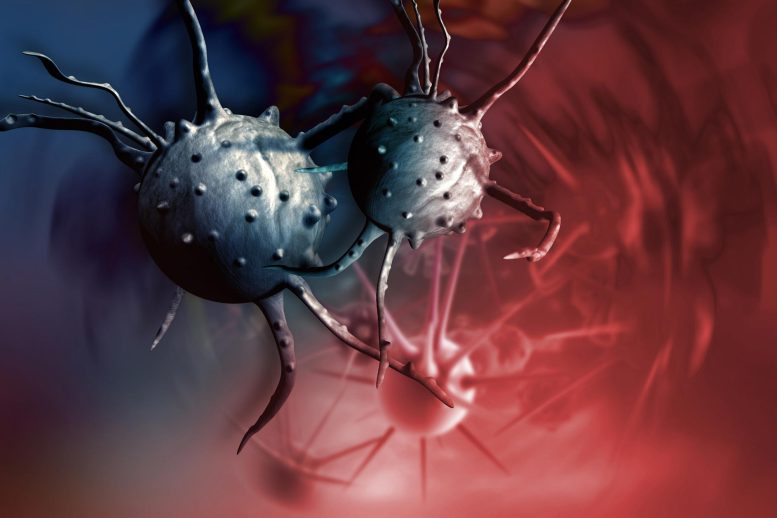
According to a study recently published in the Journal of Clinical Oncology, South Carolina is experiencing one of the most significant increases in anal cancer incidence among women and anal cancer deaths among men. The study was led by Ashish Deshmukh, Ph.D., a researcher at MUSC Hollings Cancer Center.
Deshmukh, in his recent study, identified state-level incidence patterns, disease frequency, mortality patterns, and associations with HIV/AIDS and smoking, as potential explanations for the increasing incidence of anal cancer and deaths. He recently joined the Medical University of South Carolina as the co-leader of the Cancer Control Program at Hollings. His research is focused on understanding cancer incidence and mortality, estimating the impact of risk factors on cancer, and identifying effective cancer prevention strategies and algorithms.

Deshmukh’s current publication was motivated by observations from his 2020 findings, published in the Journal of the National Cancer Institute, where nationwide anal cancer trends were quantified for the first time. He documented a dramatic rise in human papillomavirus (HPV)-associated anal cancer incidence, advanced-stage disease, and mortality.
“Anal cancer is often neglected and stigmatized. Also, it has been historically perceived as a rare malignancy,” said Deshmukh, who seeks to change the public perception, given the dramatic increase in the disease incidence and death rates that the U.S. is seeing. Nearly 10,000 new cases and over 1,600 deaths are expected to be attributed to anal cancer in 2022.
After detecting the alarming rise in anal cancer incidence and mortality between 2001 and 2015, the next goal was to understand where the incidence was rising and why the increase was occurring. Using the U.S. Cancer Statistics and National Center for Health Statistics datasets of 88,159 anal cancer cases and 14,483 deaths from all 50 U.S. states, Washington D.C., and Puerto Rico, the researchers estimated anal cancer incidence and mortality rates for each state from 2014 to 2018 versus 2001 to 2005, in association with HIV and smoking.
His team found that across the U.S., anal cancer incidence and mortality rates increased 1.5-fold in men and women over 50 years old. However, the most prominent increase – more than two-fold – occurred among people over 50 years of age living in the Midwestern and Southeastern states. In South Carolina, anal cancer incidence doubled in women and the death rate tripled in men from the time period 2001 to 2005 to the time period 2014 to 2018.
This paper also identifies key contributors to the rise in anal cancer among men and women. In states where HIV was more common, anal cancer incidence was greater among men. State-level incidence patterns were correlated with smoking among women. “HIV infection enhances the cancer-causing effects of HPV, leading to more rapid anal cancer development. Our study suggests that smoking may also be an important anal cancer risk factor among women,” Deshmukh added.
Anal cancer screenings are currently performed on HIV-infected individuals in a few states, generally in large medical centers. Screening for anal cancer currently lacks the infrastructure and support that is the foundation for other successful screening programs, like cervical cancer. For example, South Carolina has only two facilities that perform anal cancer screenings, and both are located in Charleston, one of which is at MUSC Health Women’s Health. “We need to overcome these significant challenges to ensure effective implementation of screening for equitable cancer prevention and reducing disparities,” Deshmukh said.
More than 90% of anal cancers are associated with HPV infections. HPV vaccination could potentially eliminate nearly all anal cancers in the future, highlighting the importance of rapidly improving HPV vaccination coverage among eligible adolescents. However, the majority of people experiencing the marked rise in anal cancer incidence – people older than 50 – aren’t eligible for the vaccine, which is generally recommended for those up to age 26 but can be given to people up to 45 years old if personal factors warrant it. This age disparity increases the importance of identifying novel screening approaches that could be widely implemented and adopted, Deshmukh said.
Deshmukh’s ongoing studies will shed more light on this challenge, allowing healthcare providers and policymakers to improve anal cancer screening guidelines. “For now, HPV vaccination really is the best available measure to prevent six cancers, including cervical, vaginal, vulvar, penile, anal, and throat cancer. Hollings’ HPV vaccination van that reaches rural and underserved communities is an important asset for the state,” said Deshmukh.
Reference: “State Variation in Squamous Cell Carcinoma of the Anus Incidence and Mortality, and Association With HIV/AIDS and Smoking in the United States” by Haluk Damgacioglu, Ph.D., Yueh-Yun Lin, MS, Ana Patricia Ortiz, Ph.D., MPH, Chi-Fang Wu, Ph.D., Zahed Shahmoradi, Ph.D., Shiang Shiuan Shyu, MS, Ruosha Li, Ph.D., Alan G. Nyitray, Ph.D., Keith Sigel, MD, Ph.D., MPH, Gary M. Clifford, Ph.D., Naomi Jay, NP, Ph.D., Vivian Colon Lopez, Ph.D., Gregory M. Barnell, NP, MS, Elizabeth Y. Chiao, MD, MPH, Elizabeth A. Stier, MD, Karen J. Ortiz-Ortiz, DrPH, Jeslie M. Ramos-Cartagena, MS, Kalyani Sonawane, Ph.D. and Ashish A. Deshmukh, Ph.D., MPH, 28 November 2022, Journal of Clinical Oncology.
DOI: 10.1200/JCO.22.01390
3 Comments
Antivax beliefs are dangerous.
It’s because Midwestern Republican politicians are giving us all ass cancer.
Just because you can doesn’t mean you should.